Posts tagged with Bitwig-5.1
Here you can find a listing of all posts with the tag Bitwig-5.1 on my page.
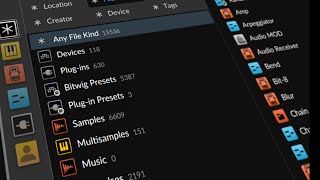
Jan 02, 2024 Tutorial
In this video, I rant about the browser in Bitwig Studio, which I believe is the best browser in any DAW. My favorite features are the ability to search for things with synonyms and the option to sort by date. However, I find the rest of the features to be visual clutter and unnecessary, and I believe the browser should be updated to include automatic classification, tagging, and randomization of file names.
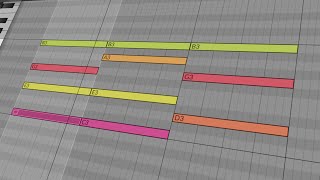
Dec 19, 2023 Tutorial
In yesterday's video, I created a dynamic global transpositioning tool for Bitwig. In today's video, I created a global chord track using a synthesizer and a note clip. By using the note grid and the global chord track, I was able to automatically correct the pitch of my piano solo and create a bass line that followed the chord progression.
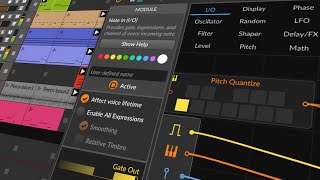
Dec 18, 2023 Tutorial
In this video, I demonstrate different methods to transpose tracks in . I start by manually transposing individual clips, then show how to use the note transpose function on each track. However, the most efficient method is using the node grid with a pitch quantizer to easily transpose tracks globally, allowing for experimentation with different keys.

Dec 14, 2023 Tutorial
In this video, I built a step sequencer that can generate drum patterns with different note ranges and accents. I explained how to use a threshold to determine which steps trigger a drum hit, and demonstrated how to adjust the velocity, gate length, and accentuation of the patterns. The sequencer allows for creative possibilities with polyrhythms and can be used to generate unique drum patterns for music production.
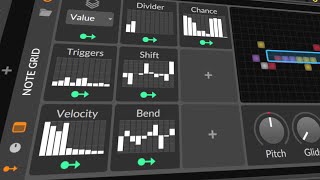
Dec 11, 2023 Tutorial
In this video, I show how to create a drum sequencer in Bitwig Studio using the note grid and various modules. By selecting a drum sampler or VST, creating note clips, and manipulating triggers, velocity, and timing, I demonstrate how to generate unique drum sequences. I also explore features like note stacking, shifting, quantizing, and randomization to create diverse and customizable drum patterns.
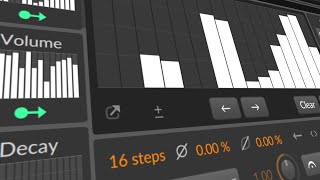
Dec 06, 2023 Tutorial
In this video, I demonstrate how to create a simple yet powerful additive synthesizer using Bitwig Studio 5.1. By utilizing the new voice stacking feature, which allows up to 16 voices, I show how to create unique and dynamic sounds by manipulating parameters such as pitch, volume, decay, phase, and even velocity. With the ability to save presets, this versatile synthesizer is perfect for producing a wide range of sounds, from bell-like tones to pad sounds with the help of effects like reverb and resonators.
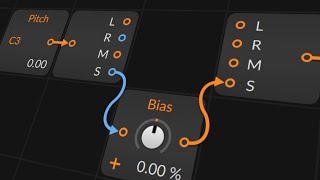
Nov 29, 2023 Tutorial
In this video, I demonstrate a specific feature of the grid where every signal inside is a stereo signal, allowing for interesting possibilities. By using the stereo split and merge modules, I show how to split a stereo signal into two mono signals, change their pitches independently, and then recombine them. This feature can be used not only for audio signals but also for pitch, gate, and phase signals, greatly expanding the creative possibilities of the patch.
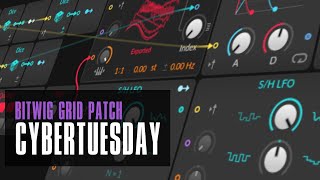
Nov 28, 2023 Tutorial
In this video, I create a generative ambient patch from scratch using Bitwig Studio. I start by creating a drone sound using polygrid and adding pitch modulation to create different pitches on the left and right sides. I then add effects like chorus and filters to add depth and modulation to the sound.
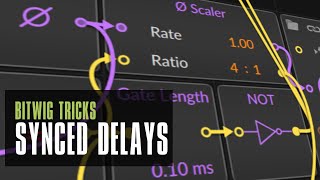
Nov 21, 2023 Tutorial
In this video, I discuss the problem of using delays in situations where there is a shuffle or groove setting. When a straight melody is overlaid with a shuffled delay, it can sound off and disrupt the groove. To address this, I demonstrate how to create a shuffled delay using the FX grid and a feedback loop, allowing the delay to align with the groove setting. I provide a patch for download and encourage viewers to try it out and provide feedback.
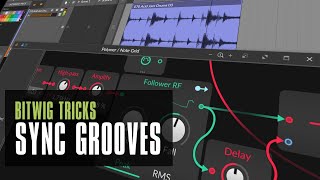
Nov 20, 2023 Tutorial
In this video, I show you a simple way to synchronize melodies or bass lines to a sloppy drum groove using Bitwig. By using a note grid and the audio signal from the drum channel, I demonstrate how to use an audio follower and delay to detect the transients in the drum loop and use them as a clock signal to synchronize the arpeggiator. This technique allows you to apply a custom groove to your melodies while maintaining the swing feel of the drums.
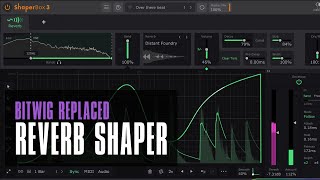
Nov 16, 2023 Tutorial
In this video, I share my experience with replacing VST plugins and discuss how companies don't actually hate me for it because of the advantages offered by certain plugins. I demonstrate how to replicate the features of a reverb shaper using a chain device, tool device, and convolution reverb in Bitwig Studio. Additionally, I explore the unique effects that can be created using the fade mode in the Delay Plus device.
More Tags to choose from:
posts Bitwig FromScratch Tutorial German Talk Skyence articles Guidelines Knowledge PDF Brain Neurosience Webtool Tempo Mixing Harmony bitwig-guides Audio-FX Poly-Grid helpers Chords Scales community-report Community music-videos Ambient Hardware Jam Drum-and-Bass Music Mixtape fawm Behringer Moog Retro release Polarity Bandcamp polarity-music Bitwig-2.0 VST-Plugin Audio-Effects Bitwig-3.0 Presets Sampling Generative Melodies Note-Grid Bitwig-3.2 Modulators Bitwig-3.1 Plugins Preset Sound-Design Replace VST Note-FX Polysynth MPE Roli Melda Bitwig-4.4 MinimalAudio Distortion Midi Arturia Groove Drums Filters FX-Grid Bitwig-4.3.4 Physical-Modeling Eurorack Instrument Arrangement Automation Risers Transitions Audio2Midi OpenSource PlugData Reverb Clever-Audio-Plugin-Clap AI download FM-synths machine-learning oscillators soniccharge Sound-Generator SynPlant Synthesizers Compiler Heavy-Compiler Synth Current Granular-Synthesis Pads Vector XY-Instrument Touch-Designer Video-Edit Visuals Extension Beginners Bitwig-5.1 Glitch Sync Delay Signals xlnaudio additive Sequencer Euclidean Bitwig-5.1.2 No-Grid Stock Finishing-Songs Thoughts Browser Jazz M1 Convolution Polyrhythm Polymeter Clip-Launcher AudioThing Lese Techno Modulation Synthwave Routing Spectral tests paulxstretch Triton Grains Patreon Utility Analogue Oeksound Bitwig-5.1.6 Kilohearts Project Bitwig-1.3.16 Tegeler Wavetable tbproaudio Amiga Bitwig-5.1.7 Trance Bitwig-5.2b1 Theming Giveaway Bitwig-5.2b2 Segments Ableton Bitwig-5.2b5 key-tracking EQ zplane Bitwig-5.2b7 Calculations Markov Shift-Register Bitwig-5.2b8 Bitwig-5.2b10 Voice-Stacks Bitwig-5.2b11 Feedback Dynamics Bitwig-5.2b12 Bitwig-5.2b13 Bitwig-5.2 sonnox dadalife Bitwig-5.2.1 Bitwig-5.2.2 Bitwig-5.2.3 Problems Audio-Tracks reaction EDM Bitwig-5.2.4 Kickdrums fft Software Bitwig-5.2.5 process.audio Impulse-Responses Bitwig-5.3b1 Freq-Shifter Bitwig-5.3b2 Bitwig-5.3b3 Bitwig-5.3b4 StateOfBitwig Bitwig-5.3b5 Mastering ControllerScript Bitwig-5.3.2 openDAW Bitwig-5.3b10 Bitwig-5.3.1 Bitwig-5.3.8 Connect-4-12 GRMTools Waveguide reloop Bitwig-5.3.10 Application Bitwig-6b1 Bitwig-6b2 Bitwig-6b3 bitwig-classic-sounddesign bitwig-grid-course










